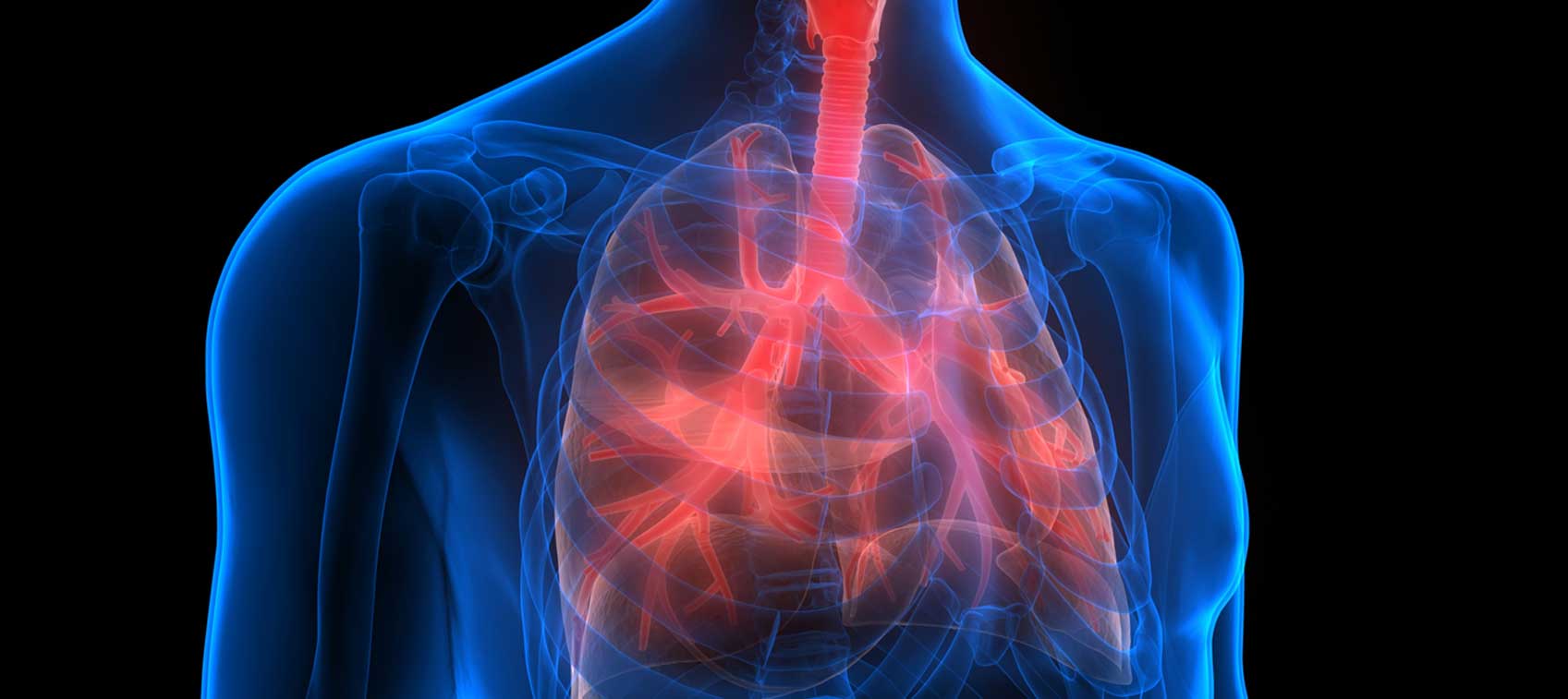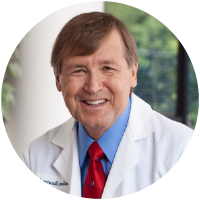
I have seen many patients with chronic obstructive pulmonary disease (COPD) in my cardiology practice over the years—not because I am an expert in lung diseases but because it is not unusual for individuals with COPD to also have heart problems. In fact, cardiovascular disease is the most common and arguably the most serious complication of COPD.
Therefore, I have made it my business to learn as much as I can about COPD so I can answer my patients’ questions, help them recognize COPD in its earliest stages, and suggest integrative solutions that enhance both heart and lung health.
What Is Chronic Obstructive Pulmonary Disease?
COPD is a group of progressive lung diseases that obstruct the movement of air in and out of the lungs and make it hard to breathe. The two primary diseases in COPD are emphysema and chronic bronchitis. Most patients have both conditions, which is why the umbrella term COPD is generally used.
- Emphysema involves the alveoli, the millions of tiny air sacs where gas exchange takes place. Inhaled oxygen moves into the capillaries lining the walls of the alveoli and carbon dioxide moves from the blood into the alveoli and is exhaled. When the alveoli are damaged or destroyed, gas exchange is reduced.
- Chronic bronchitis affects the bronchi, the tubes that carry oxygen to the alveoli. Mucus (sputum or phlegm) produced in response to bronchial irritation and inflammation narrows and clogs the airways.
Although there is some overlap between COPD and other lung conditions like asthma and lung cancer, they are distinct diseases and not part of COPD.
What Is COPD Caused By?
Chronic inflammation and oxidative stress run rampant in COPD, set into motion by exposure to airborne toxins. The #1 cause is smoking—75% of patients with COPD are smokers or former smokers.
Industrial and vehicle emissions, workplace exposure, secondhand smoke, and other sources of air pollution also damage the lungs. For patients who have both COPD and asthma, allergens can cause exacerbations that damage the airways as well.
To reduce the risk and progression of COPD, stop smoking and do your best to avoid other sources of air pollution, both indoors and out. Do not overlook the dangers of secondhand smoke. Researchers from Johns Hopkins reported in a 2020 study that childhood exposure to secondhand smoke was associated with an increased risk of COPD and other lung disorders in nonsmoking adults.
What Are the Signs of COPD?
Common signs of COPD include:
- Excessive mucus: Inflamed, irritated bronchi produce an excess of thick mucus, which can interfere with breathing.
- Coughing: A cough is a defensive reflex to clear excess mucus from the lungs. For patients with COPD, coughing tends to be worse in the mornings since mucus builds up overnight.
- Shortness of breath: A classic sign of COPD, shortness of breath is most evident with physical exertion but may occur at rest as the disease progresses.
- Anxiety: Shortness of breath can trigger the stress response, resulting in a surge of stress hormones and feelings of anxiety.
- Fatigue: Breathing requires extra effort and energy when the airways are obstructed. Patients who were asked what COPD feels like have described it as feeling like they’re “breathing through a straw” or “a fish out of water, flopping around and gulping for air.” No wonder they’re tired!
Pay attention to these early signs and symptoms and discuss them with your doctor. Most people are not diagnosed until 50% or more of their lung capacity is compromised. If you have already been diagnosed, an increase in any of these symptoms may be a sign that COPD is getting worse.
How to Test for COPD
Doctors often order spirometry, which is a simple test of lung function. You blow as hard as you can into a tube attached to a machine that measures:
- FVC: forced vital capacity, or the total volume of exhaled air
- FEV1: forced expiratory volume, or the percentage breathed out in the first second
- PEF: peak expiratory flow, or the maximum speed you can empty your lungs
This test not only helps diagnose the type of lung problem, but also picks up signs of early-stage COPD before symptoms become evident. Other tests used to monitor COPD include chest X-rays and CT scans, arterial blood gases to measure oxygen levels, and sputum examination to look for lung infections.
Treatment of Chronic Obstructive Pulmonary Disease
Inhaled bronchodilators, which relax the airway muscles and make it easier to breathe, are the most common chronic obstructive pulmonary disease medications. Inhaled glucocorticosteroids may be added to reduce exacerbations. Short courses of antibiotics may also be required for acute infections since they can cause serious complications and must be treated promptly.
Many patients end up on oxygen therapy as chronic obstructive pulmonary disease progresses. Delivered from a portable compressor through a nasal cannula or mask, supplemental oxygen can make a tremendous difference in symptoms, the ability to engage in activities of daily living, and longevity.
The treatment of last resort for chronic obstructive pulmonary disease is surgery. Procedures include removal of damaged lung tissue or bullae (harmful air spaces that are a complication of emphysema) and, in the most severe cases, lung transplant.
Are There Natural COPD Treatment Options?
Absolutely! A healthy lifestyle can significantly influence your quality and length of life.
- Breathing exercises: Aimed at strengthening the diaphragm and helping the lungs take in more oxygen and exhale more stale air, regular practice of breathing exercises reduces labored breathing and improves exercise capacity.
- Physical activity: Fatigue and shortness of breath make it hard to get motivated, but a gradually increasing exercise program is one of the best therapies for improving cardiorespiratory fitness and strengthening the muscles involved in breathing.
- Weight control: Obesity is a common problem that impairs breathing, contributes to systemic inflammation, and makes exercise more difficult. Conversely, excessive weight loss and muscle wasting may occur with advanced disease.
- Diet: A balanced whole foods diet is a foundation of good health. According to a recent review study, fruit, dietary fiber, and fish are particularly protective.
- Emotional support/stress reduction: Chronic diseases increase the risk of anxiety and depression, and COPD is no exception. Stress management techniques and professional help, when needed, are invaluable for patients living with COPD.
Talk to your doctor about pulmonary rehabilitation. Like cardiac rehab for patients who have had a heart attack or bypass surgery, pulmonary rehab provides supervised instruction in these and other self-care tools. It should be first-line therapy for anyone with COPD.
What About Nutritional Supplements for Lung Function?
Although no supplement can take the place of a comprehensive program of conventional and integrative therapies for COPD, I recommend the following nutrients and botanicals for overall lung support:
- Antioxidants: Oxidative damage is a major culprit in COPD, so it is important to increase your antioxidant intake. Vitamin E helps protect against free radical damage caused by environmental pollutants. Vitamin C and selenium boost levels of glutathione, the dominant antioxidant in the lungs. A good daily multivitamin provides adequate levels of important antioxidants.
- Magnesium: This essential mineral relaxes the bronchial muscles, which helps open the airways. Multivitamins contain magnesium, but patients with COPD may require as much as 600 mg per day.
- Quercetin: A potent anti-inflammatory, antioxidant, and immune enhancer, this bioflavonoid has a special affinity for the lungs.
- Botanicals: A number of plant extracts are used in traditional medicine to treat respiratory problems. Andrographis and astragalus help stave off respiratory infections. Black cumin seeds contain oils that support overall lung function. Extracts of boswellia and quince help breathing problems by reducing inflammation in the respiratory tract.
- Omega-3s: Essential fatty acids help control the systemic inflammation that affects people with COPD, improve their quality of life, and support overall health.
Can You Reverse COPD?
There may not be a cure for COPD, but disease progression can be slowed, symptoms reduced, and quality of life dramatically improved with appropriate conventional and complementary treatments.
Equally important, COPD can be prevented. Tackle risk factors, take early warning signs seriously, and get on the path to optimal health today.


